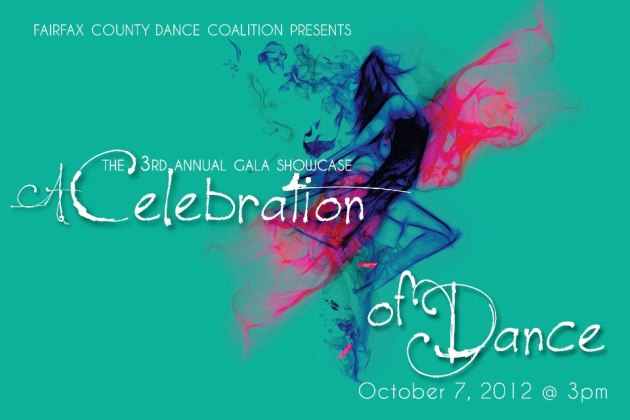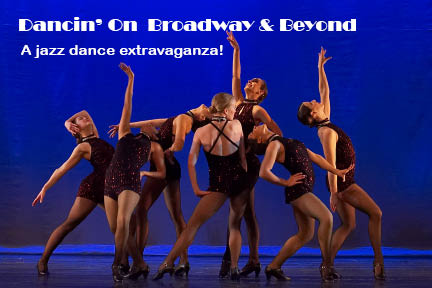FCDC Goes Formal with… A Celebration of Dance
September 18, 2012 Leave a comment
 With black ties and ball gowns at the ready, the Fairfax County Dance Coalition (FCDC) is making A Celebration of Dance not just a showcase, but a full gala affair. Now in its third year running, the FCDC’s gala event is overflowing with an array of area talent, featuring twelve companies and a mix of ballet, tap, jazz, modern, hip hop, musical theatre and international dance styles. Not just the dancers will be dolled up for this event; the audience is encouraged to show off their own glitz and glam.
With black ties and ball gowns at the ready, the Fairfax County Dance Coalition (FCDC) is making A Celebration of Dance not just a showcase, but a full gala affair. Now in its third year running, the FCDC’s gala event is overflowing with an array of area talent, featuring twelve companies and a mix of ballet, tap, jazz, modern, hip hop, musical theatre and international dance styles. Not just the dancers will be dolled up for this event; the audience is encouraged to show off their own glitz and glam.
A Celebration of Dance will be presented Sunday, October 7th at 3:00 p.m. at the Northern Virginia Community College, Annandale Campus theatre. A brief reception is open to audience members following the performance in the upstairs gallery.
“Every year, the reasons we produce this show become stronger,” says Marilyn York, FCDC President, Gala Director and artistic director of Dancin’ Unlimited Jazz Dance Company. “The Gala not only provides an opportunity for advanced and professional dancers to share their artistic talents with each other across this dance community. The Gala also helps to build a network of dance enthusiasts beyond family and friends of dancers.”
Drawing together these twelve specialized groups has put Fairfax County dance on the map in the DC Metro Area, and the FCDC has created this dance production with the purpose of sharing its talent across county lines. Participating companies include: BalletNova, Center Stage Dance Company, Dancin’ Unlimited Jazz Dance Company, Encore Theatrical Arts Project, Gin Dance Company, Impact Dance Company, Lasya Dance Company, Nrityanjali Dance Company, The Ballet Arts Ensemble of Fairfax, The Fairfax Ballet Company, The Kintz Mejia Academy of Ballet and the Virginia Ballet Company.
“It’s amazing how we all get along,” states Caroline Frankil Warren, Executive Director of BalletNova Center for Dance. “The Gala is a watershed collaboration among 12 dance groups, resulting in a wonderful showcase of the dance talent hidden within Fairfax County.”
BalletNova will perform in two pieces – the Pas de Deux from Les Sylphides and a contemporary piece by Amy Tuck. The Gin Dance Company will present “The Core,” a contemporary piece about universal interconnectivity, energy and strength. Center Stage will perform a modern take on Frank Sinatra’s iconic song “New York, New York,” fusing classic Broadway and rhythm tap. “White Out,” a contemporary jazz piece performed by Dancin’ Unlimited, encourages the audience to get past, or white out, life problems. The Fairfax Ballet Company will perform a contemporary lyrical piece inspired by the journey of adolescence. Encore will present “Kick Line,” a Rockette-style number. The audience can also expect several traditional Indian dance works.
For the second consecutive year, the Fairfax County Dance Coalition and the Arts Council of Fairfax County will announce scholarship awards to two 2013 high school graduating seniors from among the FCDC member companies planning to pursue studies in dance. Mason District Supervisor Penelope Gross and Arts Council President Linda Sullivan will present the scholarships at the Gala.
Gala tickets are $20 in advance and $23 at the door. To purchase tickets and find more information, visit www.dancefairfax-gala.org, or contact any of the participating dance organizations. The NVCC Annandale Campus theatre is located at 8333 Little River Turnpike in Annandale, VA; convenient to Beltway exit 52A.
This information is from a Fairfax County Dance Coalition press release. Lauren Green of danceDC will be performing at the event with Dancin’ Unlimited Jazz Dance Company.







